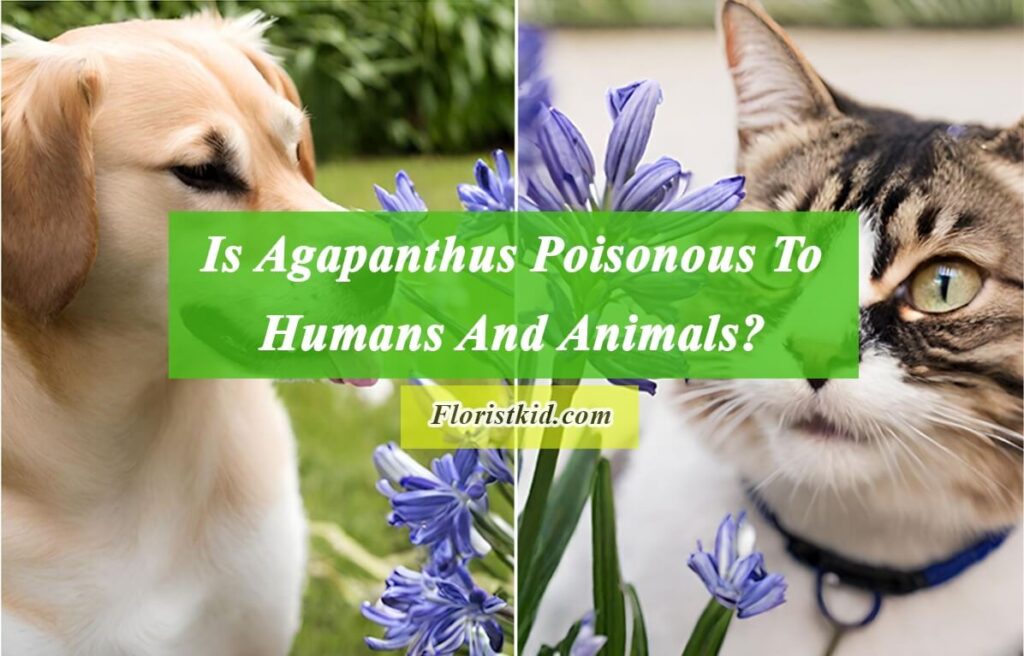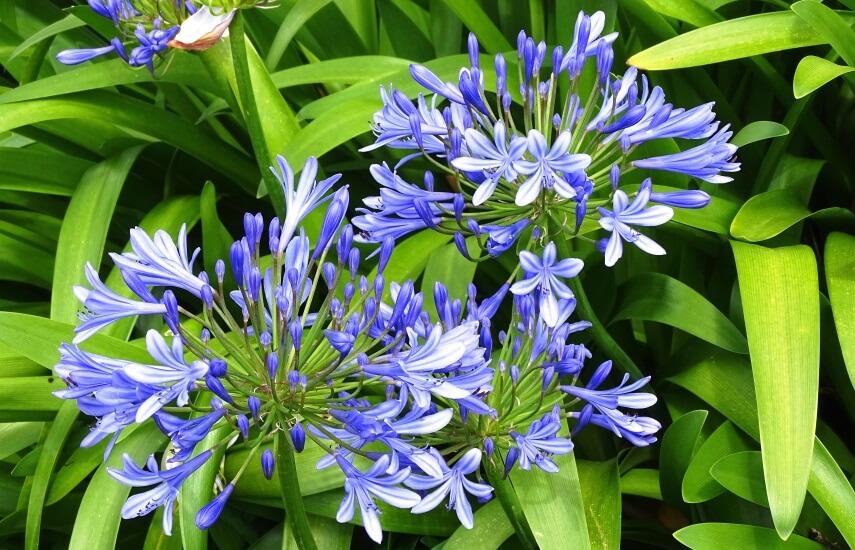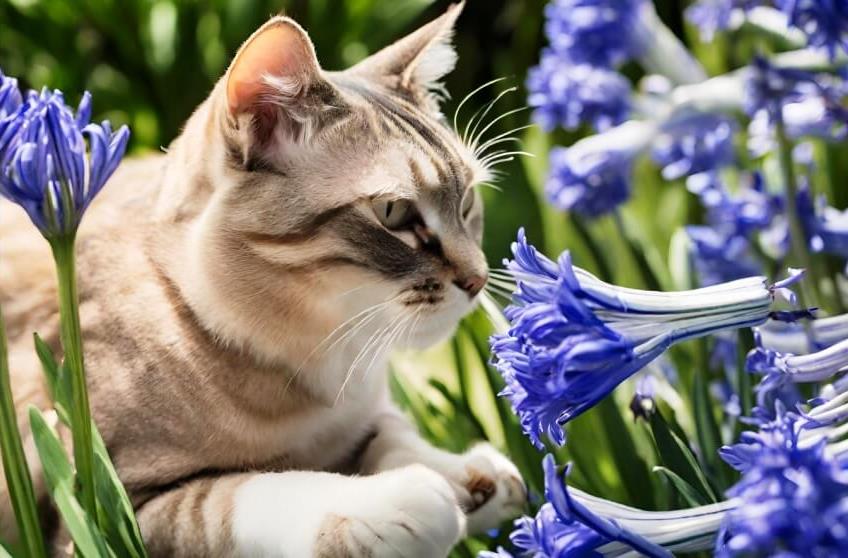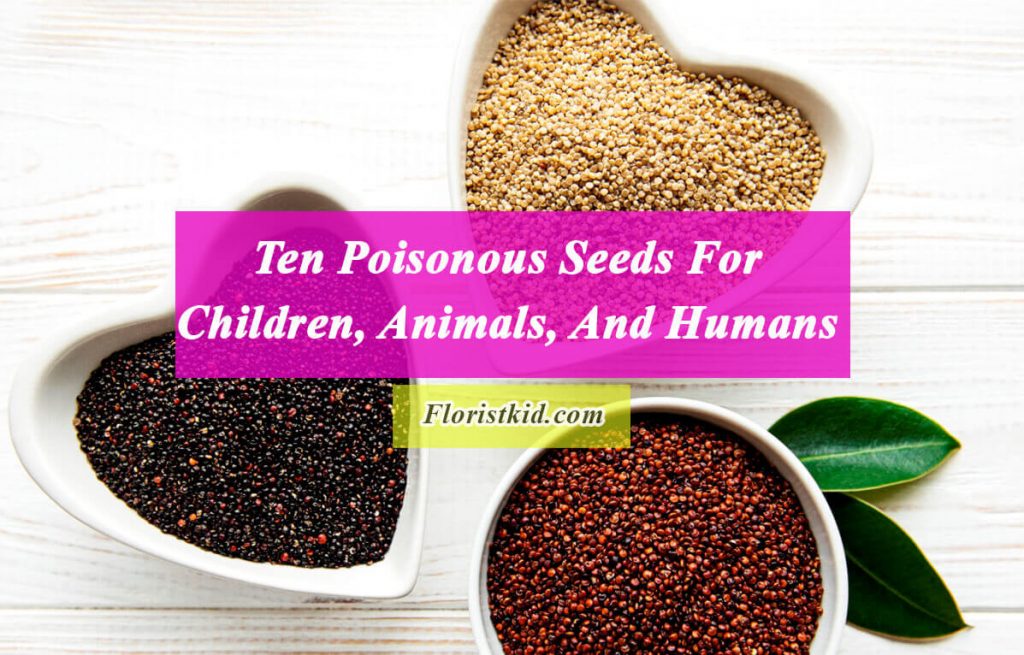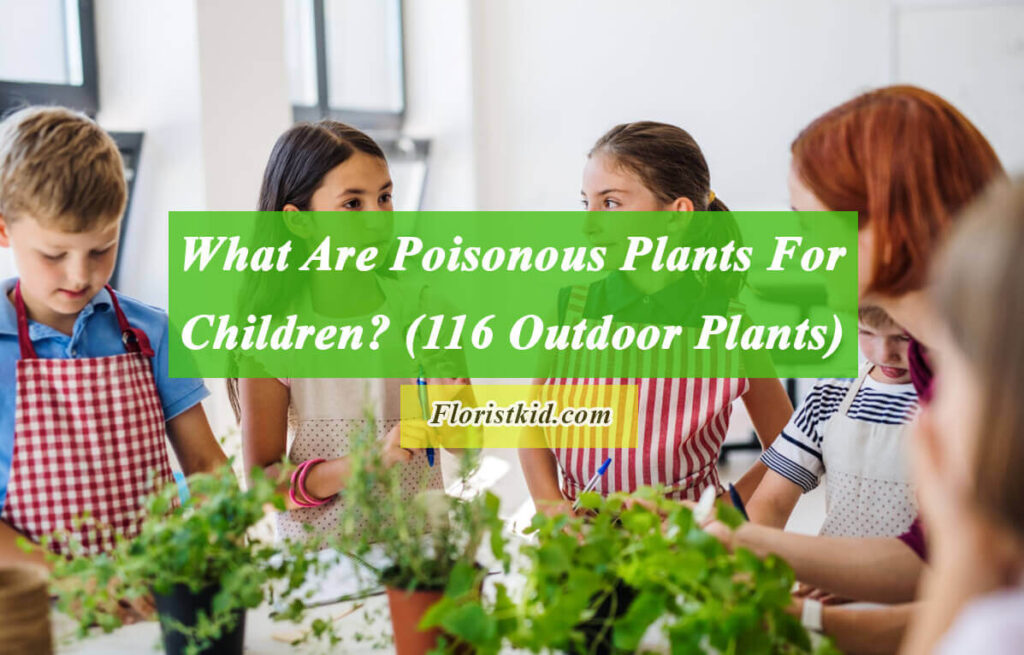Agapanthus (Agapanthus Spp.), commonly known as Lily of the Nile or African lily, is a stunning flowering plant that delights garden enthusiasts with its vibrant blue and white blossoms. While this plant adds aesthetic appeal to landscapes, it is essential to recognize that certain parts of the agapanthus plant can be toxic if ingested. This article will explore the potential risks and toxicity associated with Agapanthus for both humans and animals [1].
If you are interested in this topic, you can also read
<<Are Hostas Poisonous? >> and <<Are Hydrangeas Poisonous? >> articles.
Toxic Components Of Agapanthus
Agapanthus plants contain various toxic compounds, including glycosides, saponins, and substances known as lycorine alkaloids. These substances are primarily found in the plant’s roots, bulbs, and sap. While beautiful to look at, caution is necessary when growing Agapanthus, especially if you have young children or pets. The sap of Agapanthus plants contains natural irritants, primarily oxalate crystals, which may cause skin irritation upon contact in some individuals. Skin rashes, itching, and redness are common symptoms, but severe reactions are relatively rare [2].
Is Agapanthus Poisonous To Humans?
Yes, Agapanthus is mild-to-moderately poisonous to humans. The toxicity level of Agapanthus can vary depending on the specific variety and the geographical region it is grown. It is important to note that the entire agapanthus plant is generally considered poisonous, particularly the bulbs, leaves, and flowers, which can have adverse effects on the human body if consumed in significant amounts.
Symptoms Of Agapanthus Poisoning In Humans
Ingesting parts of the agapanthus plant can lead to various symptoms, ranging from mild discomfort to more severe reactions. Common symptoms include nausea, vomiting, stomach pain, diarrhea, and, occasionally, skin irritation. In rare cases, individuals with a known sensitivity or allergy to plants in the Amaryllidaceae family, which Agapanthus belongs to, may experience more severe symptoms like difficulty breathing or an allergic reaction. If any of these symptoms occur following the ingestion of Agapanthus, it is essential to seek immediate medical attention [3, 4].
Safety Measures In Humans
To minimize the risk of adverse effects associated with Agapanthus, follow these safety precautions:
Gloves And Protective Clothing: When handling Agapanthus, it is advisable to wear gloves and protective clothing to prevent potential skin irritation caused by contact with the sap.
Washing Hands: After handling Agapanthus, thoroughly wash your hands with soap and water to remove any residual sap.
Educating Children: Teach children about the potential dangers of Agapanthus and instruct them to avoid touching or ingesting any part of the plant.
Alternatives:
If you are concerned about the potential toxicity of Agapanthus or have children in your household, consider alternative plants that do not pose similar risks. Some safe flower alternatives for ornamental displays include marigolds, snapdragons, zinnias, or petunias.
Is Agapanthus Poisonous To Cats?
Yes, Agapanthus can be poisonous to cats if ingested in significant quantities. While toxic compounds are more concentrated in certain parts of the plant, like the bulbs and roots, it’s important to note that any part of the agapanthus plant can be harmful to feline companions if consumed [5].
Symptoms Of Agapanthus Poisoning In Cats
If a cat ingests Agapanthus, it may exhibit a range of symptoms indicating poisoning. These symptoms can vary in severity and may include:
Vomiting And Diarrhea: Cats may experience episodes of vomiting or diarrhea as their digestive system reacts to the toxic compounds present in Agapanthus.
Oral Irritation: Chewing on or ingesting Agapanthus can lead to oral irritation, causing drooling, pawing at the mouth, or difficulty swallowing, resulting in decreased appetite or refusal to eat.
Lethargy And Weakness: Cats affected by agapanthus poisoning often display signs of overall lethargy, weakness, or a lack of interest in regular activities.
Gastrointestinal Upset: Additional gastrointestinal symptoms may include abdominal pain or discomfort, loss of appetite, and changes in bowel movements.
Immediate Steps To Take
If you observe your cat exhibiting any symptoms of agapanthus poisoning, it is crucial to contact your veterinarian immediately.
Prevention And Safety Measures In Cats
To protect your feline friend from agapanthus poisoning, consider the following preventive measures:
Minimize Access: Keep agapanthus plants out of reach or in spaces inaccessible to your cat, both indoors and outdoors.
Educate Yourself: Familiarize yourself with the potential dangers associated with various types of plants commonly found in your household or garden.
Safe Alternatives: Opt for cat-friendly plants and flowers that are non-toxic, or opt for artificial alternatives to decorate your home and garden.
Supervision And Observation: Monitor your cat’s behavior during outdoor activities, especially if agapanthus plants are present in your garden or surrounding areas.
Is Agapanthus Poisonous To Dogs?
Yes, Agapanthus can be harmful to dogs if ingested. The ingestion of toxic compounds of Agapanthus can result in mild to severe symptoms, depending on the quantity consumed and the dog’s overall health [6].
Symptoms Of Agapanthus Poisoning In Dogs
The most common symptoms of Agapanthus poisoning in dogs include:
Gastrointestinal Issues: Dogs may experience vomiting, diarrhea, loss of appetite, and general digestive disturbances.
Oral Irritation: The sap of Agapanthus can cause irritation and inflammation of the mouth, gums, and throat if chewed or licked excessively.
Dermatitis: Some dogs may develop skin reactions, such as redness, itchiness, or rashes, upon contact with the plant’s sap.
Lethargy and Weakness: In severe cases, dogs may display signs of lethargy, weakness, and even collapse due to the toxins affecting their nervous system.
Prevention And Safety Measures In Dogs
Given the potential risks associated with Agapanthus, it is crucial to take preventative measures to ensure the safety and well-being of your furry companions. Here are some practical steps to follow:
Restrict Access: Keep your dog away from Agapanthus plants by creating barriers or using fencing in your garden area. If you have indoor plants, ensure they are placed out of reach.
Educate Yourself: Be familiar with the types of plants in your environment, including Agapanthus, and its potential dangers to your dog.
Supervision: When walking or exercising your dog, avoid areas where Agapanthus commonly grows, such as public parks or neighbors’ gardens.
Professional Advice: Consult with your veterinarian to gain more insight into plants and flowers best suited for your pet’s health and safety.
Conclusion
It is important to be aware of the potential poisonous properties of Agapanthus. Ingesting any part of the plant could lead to mild to moderate symptoms, and individuals with plant allergies or sensitivities need to be particularly cautious. By taking appropriate precautions, such as avoiding ingestion and educating ourselves and others, we can safely enjoy the beauty of Agapanthus without compromising our well-being or that of our loved ones.

